The creek looked like something pulled out of a wilderness designer’s catalogue. It snaked through a sweeping meadow valley, each turn revealing deep undercut banks and plenty of hiding spots for trout. Rocks peppered about half the runs, giving me a mix of pools, riffles, and pocket water, in which I knew were cutthroat eager to smack a dry fly.
That’s what this creek is known for, after all. It’s a bastion of pure-strain Colorado River cutthroat, located deep in the heart of Central Utah’s wilderness. Bridger Lyons and I had hiked most of the morning — and dinged the hell out of his truck’s running boards on some boulders — to get to that stretch of the creek.
I threw a cast to a pool, letting my big dry fly drift right through the kitchen of whatever trout lurked below. Like clockwork, a fish rose, took my fly in a splash, and I set the hook.
It wasn’t big, so I quickly netted the trout. Kneeling slightly, I stared, slack jawed, at the tiger trout squirming around in the rubber mesh.
“Bridger!” I hollered upstream, where he’d set up shop. “I got a tiger.”
He turned. “What?”
I held the net up for emphasis. “Yep. Tiger trout.”
He gave me an expression I’m sure mirrored my own confused one. I let the fish go, snapping a few pictures and making a mental note to talk to the regional fisheries biologist as soon as possible. The last thing I want are tigers out-competing the cutts in here, I thought. What are tigers doing here?
That was three years ago. Today, the creek is probably a 50-50 split between tiger trout — a sterile hybrid of brook and brown trout that are created in hatchery laboratories — and cutthroat trout. The explanation I received from the fisheries biologist was that they’d planted the tigers in the creek to provide a more diverse sport fishery. Mike James, a guide buddy of mine located in central Utah, says he’s happy to have the tigers in the creek. Mike tells me that during the dog days of summer, the cutthroat hide out in deeper, cooler water, making them tough to catch. Tigers, however, cooperate better for clients.
I heard a similar story from Bryan Englebert, a sport fishery biologist for Utah’s Northeast Region. We were somewhere on the North Slope of the Uinta Mountains, near the Utah-Wyoming line, fishing a stream on which Bryan had recently completed a cutthroat restoration project. To the south, a cirque dominated the landscape, and beneath its brim are a few lakes full of big cutthroat.
“Had any reports up there on the fishing?” I asked Bryan between casts, gesturing to the lakes a few miles away.
“Yeah, they’re catching some big tigers,” Bryan said. “Four and five pounders. Just tanks.”
“I thought it was just cutthroat?”
“Nope. We got ‘em both in there.”
Heading off my inevitable “why?” Bryan said, “It’s what the public wants, so we put ‘em in there. They don’t out-compete the cutthroat too much, though.”
It’s what the public wants.
Why?
I don’t have anything against tiger trout. Some of my fondest fishing memories over the past five years include stalking and catching big ol’ tigers. Their popularity is obvious, since they grow big quickly and have a reputation for smacking streamers like a freight train. They taste great and look even better. Tigers are nearly everything you want a trout to be, if you ignore their mad scientist vibe.
However, as they show up in more and more high country lakes and streams, I can’t help but wonder if our collective desire as anglers for big, exotic fish has gone too far. Like Bryan said, tiger trout are stocked, in part, because it’s what the public wants. And on average, they’ll grow to better sizes than cutthroat. A quick glance at Instagram reveals that most of the fish featured in the grip-and-grins aren’t pan-sized cutthroat.
With the unending deluge of big fish pictures assaulting anglers every time they browse social media, it’s no wonder the public largely wants easily-accessible, fast-growing, big, gorgeous fish. Tiger trout check all those boxes.
But is that what we really want dominating the angling landscape? Or, has our desire for big, exotic fish gone too far, especially here in the Rockies? I wonder if the growing presence of tiger trout in the high country is indicative of the larger cultural shift within the fly fishing community. We profess to love native fish, and actively work for conservation. But when push comes to shove, how many of us are willing to give up fishing for steelhead on the Olympic Peninsula, or king salmon on the Kenai River, to give those endangered fish even a slight edge at reestablishing themselves? At what point does the desire for diverse fisheries dilute the unique, unmatched heritage that cutthroat trout represent?
Diverse fisheries are fun — especially in the high country of the Rockies. Catching grayling at 11,000 feet above sea level is a rare treat. This variety of fish gives anglers more opportunities to catch different species, and provides for more harvest. Fresh-caught brook trout cooked over an open fire is one of nature’s premier delicacies. But is that worth losing some of the little cutthroat-only water we have left?
I’m not advocating for cutthroat in every lake, stream, pond, and creek. That anglers can head up Utah’s Mirror Lake Highway in the Uinta Mountains and catch a limit of pan-sized brookies and tiger trout for dinner on any given summer day is a part of angling I’d never want to lose. It’s not in those places where I begrudge the presence of nonnative fish. It’s in the secluded ponds and creeks – like the one Bridger and I fished three years ago — well off the beaten path, miles from where 90 percent of anglers are willing to go, that I wonder if our desire for Instagram-worthy fish pictures has gone too far.
I’m not in the business of telling someone how to fish. I worry, though, that our desire for big fish is overshadowing the real reasons that we all started fishing in the first place. I didn’t pick up my dad’s fly rod two decades ago with the intention of doing a 15-minute photo shoot with every trout I landed. That’s an all-too-common sight on a lot of rivers here in the West, even as we trumpet safe catch-and-release practices from every blog and magazine.
The tiger trout takeover isn’t really about tiger trout. It’s much more than that. It’s an indictment of our current collective attitude as fly anglers — and I’m as guilty as anyone else. I make my living from the stories I tell about fly fishing and the photos I take to document the adventures. I’ve held fish for photoshoots long after I knew I should’ve let them swim off.
But I know I can be better. I know the angling community can improve. Perhaps we just need to remember these words from Lee Wulff the next time we head to the river:
“It is you and clean, flowing water. It is you, inquisitive, in a wild world that is older than man, seeking greater understanding and finding not only an endless interest but a tranquility that comes, most of the time, to all nature’s wild creatures.”





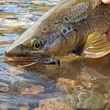

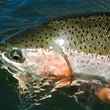




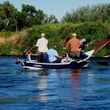









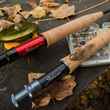



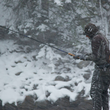




Comments
Trout Soup replied on Permalink
I agree that we should keep our Native species flourishing. Here in Colorado I mainly focus on hiking to high lakes for our native Cutts. There is only one lake I know of where tigers are present that I’ve caught and they grow quite small. I’m thankful too that that lake is otherwise full of tiny Brookies. Glad to know you feel that the tiger is a nuisance in our more primitive places.
Bob replied on Permalink
Tiger trout are also naturally occurring phenomenon. They're common in the spring creeks of Wisconsin where brookies and brownies intermingle. I don't know about the streams in the article, but if the local dnr or fisheries are dumping them in cutthroat streams, they shod stop.
Bill Lehrter replied on Permalink
Thank you for this article. Maybe I'm a curmudgeon but I'm starting to feel like Instagram is becoming detrimental to conservation at times. I know it's not exactly the same issue, but I know lots of folks who use hashtags about public lands or conservation issues and thats the end of it. Raising awareness only goes so far. In this instance, countless Instagram photos of how cool tiger trout are will only hurt the native cuts.
Jim West replied on Permalink
I understand that the Cutthroat trout is the only trout native to Utah and needs to be protected, but in my experience they are the least hardy fish now available in Utah. If we want to dedicate a few waters in Utah to Cutthroat, I am fine with that, but it is a tragedy when a self sustaining, trophy producing, Brook trout fishery is destroyed to make it a cutthroat water that must have thousands of fish planted every year just to sustain a mediocre fishery as has been the case at several Boulder Mountain lakes. In my experience the Brook, and Tiger trout are more hardy, get bigger, fight harder and taste better and they also have a much higher chance of survival when caught and released than a Cutthroat does. Let's dedicate a small percentage of our fisheries to protecting the Cutthroat and have much stronger and healthier fisheries everywhere else and keep the the public, which ultimately pays all of the bills, happy!
Cole replied on Permalink
You should've killed that tiger; that's what they were put there for.
Craig Patterson replied on Permalink
Since when did Utah Division of Utah Wildlife do “what the public” wants? Huge contradiction to encourage angles to participate in their cutt slam program...at a fee mind you and then create another synthetic fish which competes with natives.
We pay these guys?
EG replied on Permalink
Hey folks, Brook trout are not native to Utah, Brown trout are not native to the Americas. Many or perhaps most of the alpine lakes in the Rockies would not have any trout if not for planting efforts starting when the early invasive settlers thought it would be a good idea to plant alpine lakes with fish. Many were from the E. Coast were 'real trout' mean brook trout, hence many lakes that may not be suitable were planted and they can drive out the natives. Tiger trout and Tiger Muskies have been used and are being used some situations to slow down over-reproducing stunted populations of brook trout and, wait for it, over-reproducing goldfish. In recognition of the damage that brook trout can do to native populations of fish, the Washington State Dept. of F&W has removed all catch limits on Brook trout in most of the state. Tiger Trout are sterile in theory so it is much easier to control the populations when trying to deal with one invasive problem using a hybrid, piscivorous, fun to catch and eat fish.
Pages